Mirin is a sweet rice wine widely used in Japanese cooking. Learn what mirin is used for, the different types of mirin, recommended brands, where to buy it, substitutions, and more!
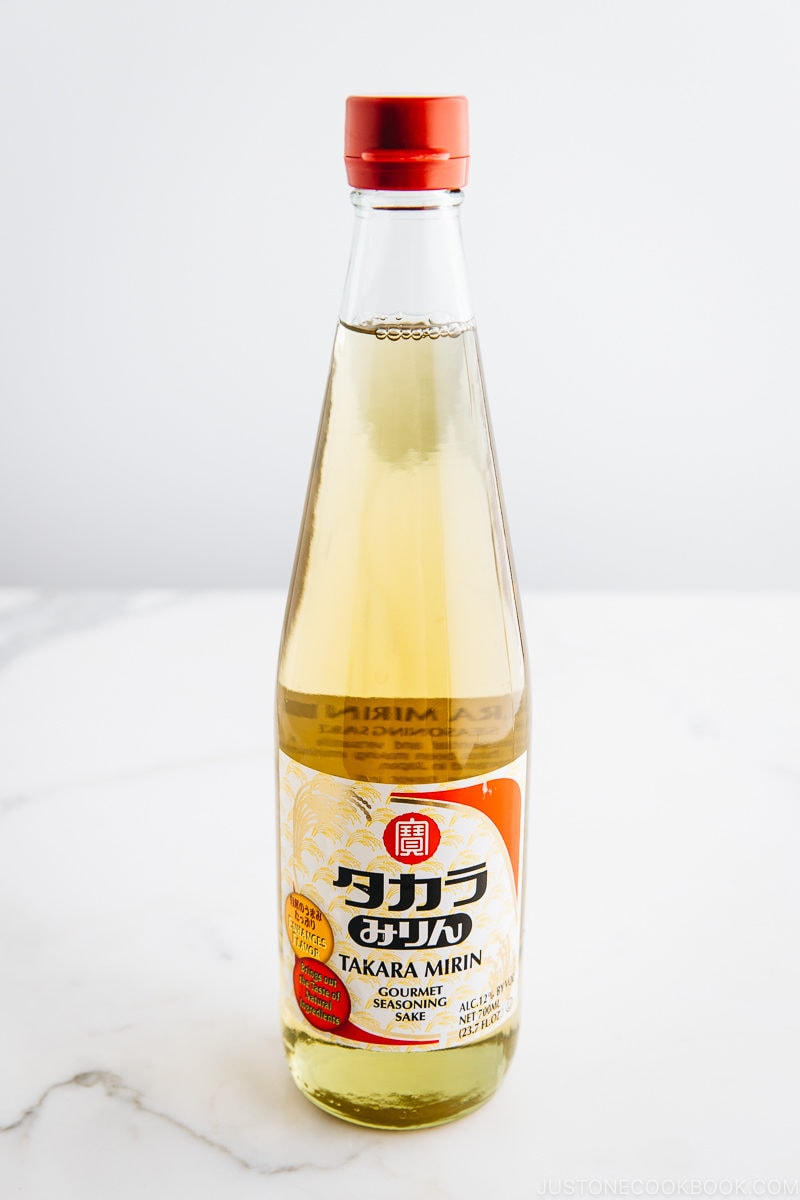
Mirin (みりん, 味醂) is a rice-based condiment commonly used in Japanese cooking to impart a subtly sweet and mildly acidic flavor to dishes. It is often found in sauces, glazes, and marinades.
Table of contents
Mirin (みりん, 味醂), or sweet rice wine, is a sweet and syrupy liquid used as a seasoning and glazing agent. Like soy sauce, it is one of the most essential condiments in Japanese cuisine. Similar to sake, mirin is also a type of rice wine but with a lower alcohol content (14% instead of 20%). We use this sweet rice wine in everything from teriyaki salmon to hot pots to donburi rice bowls.
What Does It Taste Like
Mirin offers a delicate sweetness and a pleasant aroma to many Japanese dishes. The sweetness comes from fermentation, where the rice starch converts into sugar.
How To Use
Mirin tenderizes the ingredients you cook with and adds a mild sweetness to the overall flavor of the dishes. A deeper body and umami also help mask the smell of fish and seafood and allow the flavors to “sink in” to the dish better.
The sugar and alcohol content also prevents the ingredients from disintegrating. We often pair it with soy sauce and sake to make marinades for meat or seafood dishes.
Lastly, mirin adds luster to ingredients as a finishing touch, which is why it is crucial in teriyaki sauce.
Contrary to some non-authentic recipes, mirin is not an ingredient for making sushi rice, which uses rice vinegar or seasoned sushi vinegar.
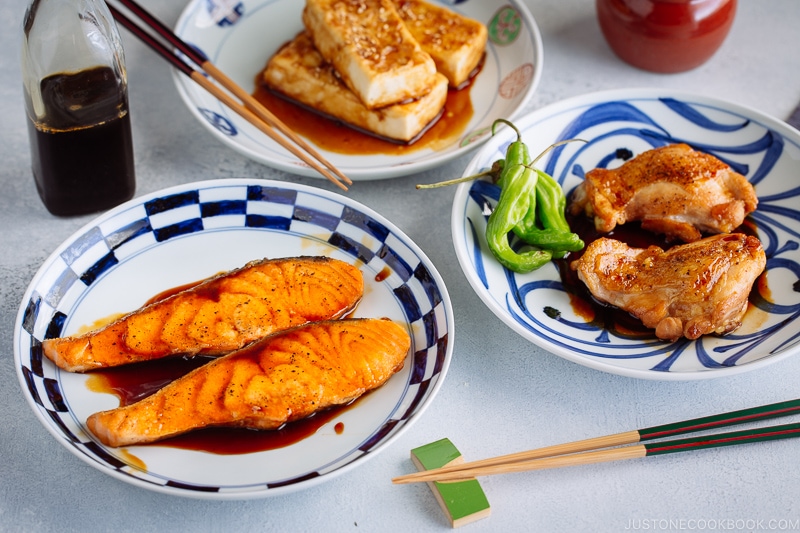
Mirin is a must for Homemade Teriyaki Sauce
Different Types of Mirin
In general, there are four types: hon mirin (“real” mirin, 本みりん), mirin (みりん), mirin-like condiment (みりん風調味料), and mirin-type condiment (みりんタイプ調味料).
Hon-Mirin
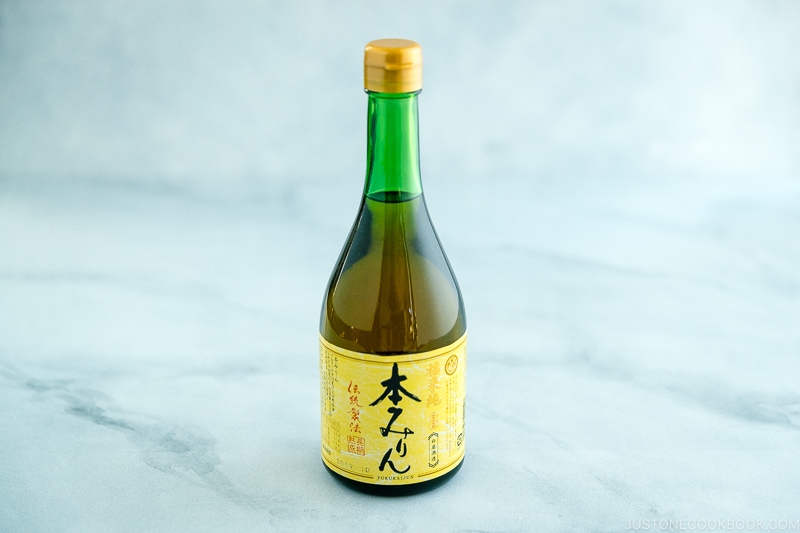
Hon mirin (本みりん), also known as true mirin, contains 14% alcohol and 0% salt. It is made from steamed glutinous rice, rice koji mold, and shochu (a distilled alcoholic beverage), which is mixed and fermented for about 40 to 60 days.
Enzymes in rice koji decompose starch and proteins of glutinous rice, producing various saccharides, amino acids, organic acids, and fragrance ingredients, resulting in the formation of Mirin.
Hon mirin has a higher alcohol content; it can be stored in a cool place for up to three months. If stored in the refrigerator, the sugar may crystallize and sink to the bottom, but it’s still usable.
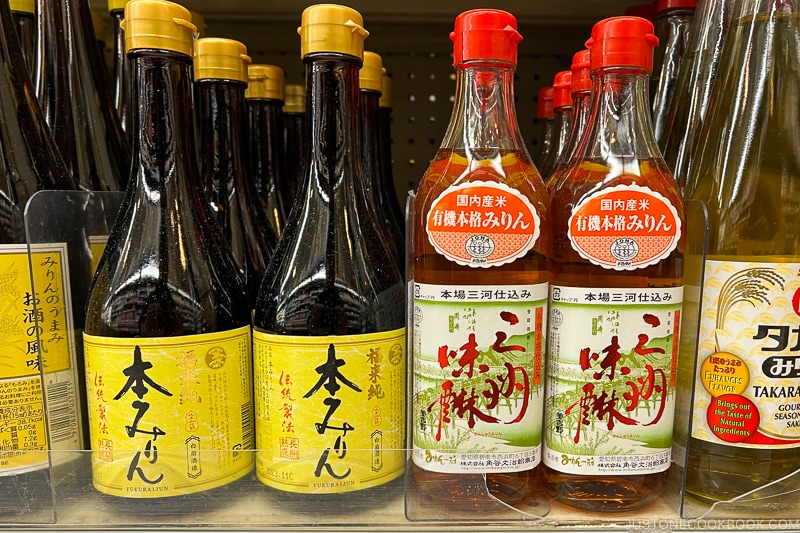
In Japanese grocery stores, you can find imported hon mirin (a bit pricey). Some popular hon mirin might have been imported from Japan to Japanese markets overseas, including Fukuraijun Hon Mirin (picture on the left), Hinode Hon Mirin, Kokonoe Sakura, and Mikawa Mirin (picture on the right).
Mirin

The main difference between mirin and hon-mirin is the usage of sake in mirin instead of shochu.
You can purchase Takara Mirin, which includes sake (made with rice, water, koji mold, and yeast), glucose, and corn syrup (No High Fructose Corn Syrup is used).
- Takara Mirin (Takara)
- Manjo Hon Mirin (Kikkoman) (white mirin)
For those looking for mirin without high fructose corn syrup or corn syrup, we recommend Eden Foods Mirin, which contains only water, rice, koji, and sea salt in the ingredient lists.
Mirin-style Condiments
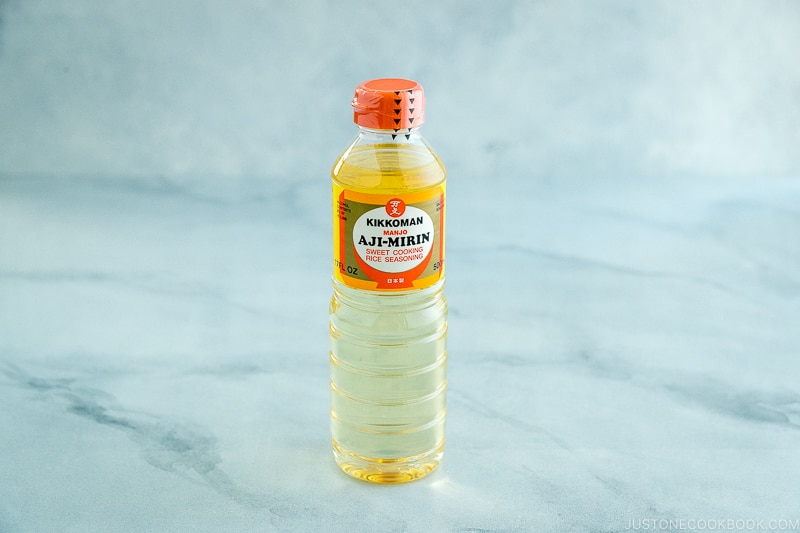
Mirin-style condiments (みりんタイプ調味料、みりんタイプ醸造調味料) are cheaper alternative products that resemble the taste of mirin. They are often labeled as aji-mirin (sweet cooking rice seasoning), which means “taste like mirin,” and contain 8-14% alcohol and 2% salt. They are made of starch or glucose syrup, water, alcohol, rice, and salt.
Kikkoman aji-mirin is a famous brand at many Asian and mainstream grocery stores, including Walmart and Target.
Mirin-like or Mirin-fu Condiment
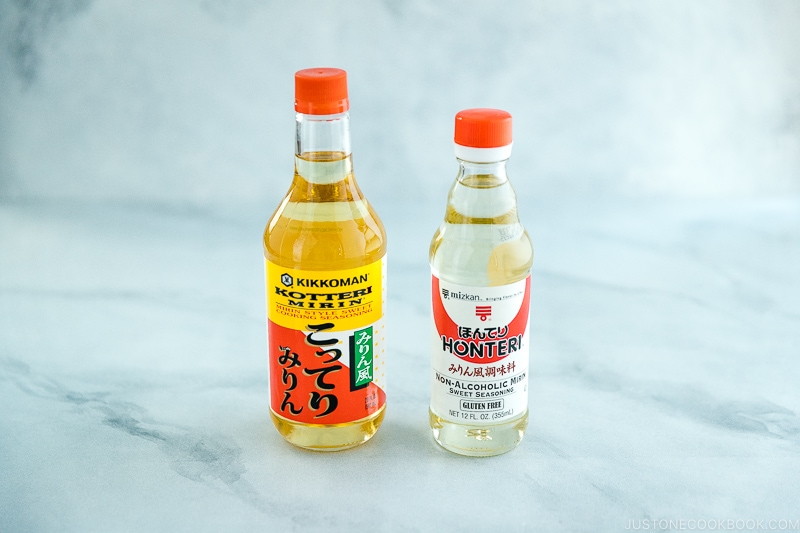
Mirin-like condiment (みりん風調味料) contains no alcohol or less than 1% alcohol and less than 1% salt. It is made of starch syrup, rice/cultured rice brewed seasoning, brewed vinegar, and acidic components. The mirin-like condiment is cheaper because it avoids certain alcohol taxes.
It claims to have the same taste as hon mirin and can enhance the flavors and texture.
It needs to be refrigerated after opening and used within three months.
- Honteri (Mizkan) – No alcohol
- Kotteri Mirin (Kikkoman)
- Kotterin (Kikkoman)
Where To Buy
You can buy mirin from Japanese grocery stores, Korean grocery stores, Asian supermarkets, or online. Amazon carries a few options:
I use mirin from Takara Mirin. Other online stores, such as Umami Insider, offer imported mirin-type seasoning.
How to Store
Hon mirin has more alcohol; therefore, it can be stored in a dark, cool place for up to 3 months. If you store it in the refrigerator, the sugar may crystallize.
Mirin-like condiments contain less alcohol; therefore, store them in the refrigerator and use them within three months.
Substitutions
You can substitute mirin with sake and sugar, although the taste will be different. The ratio of sake and sugar is 3 to 1. For example, mix ¾ cup (or 1 Tbsp) of quality drinking sake with ¼ cup (or 1 tsp) of granulated sugar.
I don’t recommend using dry white or sweet marsala wine or dry sherry to replace mirin as they have a more pronounced taste and a more robust alcohol percentage. You can substitute with dry white wine when a recipe calls for sake, but not mirin. Sweet Marsala wine has hints of grape flavor and will overpower the authentic taste.
Frequently Asked Questions
Recipes Using Mirin

Use mirin in sauces, seasonings, marinades, broths, and glazes. It pairs well with meat, fish and seafood, tofu, vegetables, and rice dishes. A little goes a long way.
Differences Between Sake and Mirin
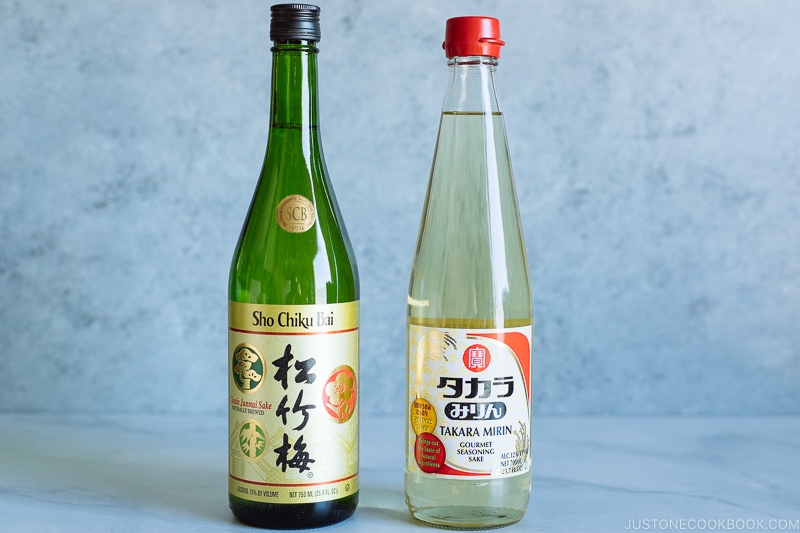
Sake and mirin are frequently used together in a recipe for Japanese cuisine.
Sake contains higher alcohol and lower sugar, while mirin has a higher sugar and lower alcohol content. Mirin can be used untreated in a dish, whereas sake is often added earlier in cooking to allow some alcohol to evaporate.
To learn more about the difference between sake and mirin, click here.
Spotlight: 6 Must-Have Condiments to Make Your Favorite Japanese Food
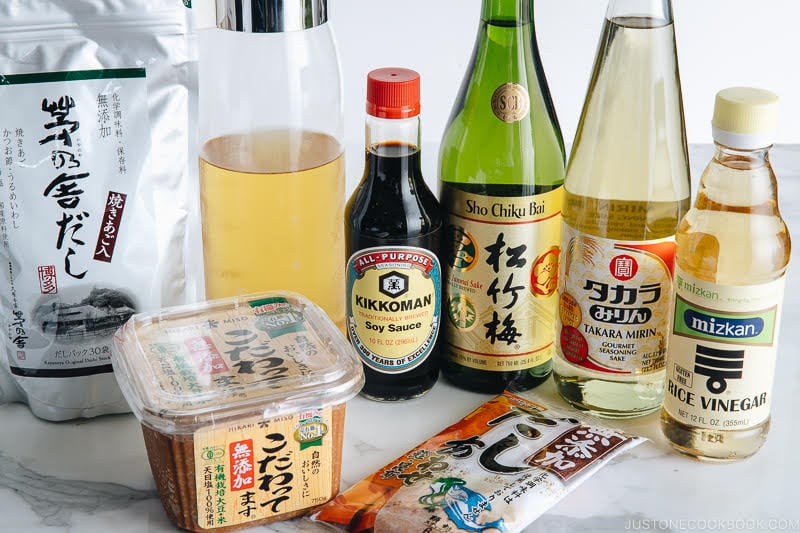
Here are the 6 must-have condiments to start making your favorite Japanese food at home.
Editor’s Note: This post was originally published on January 23, 2012. The post has been updated with new content and republished on April 7, 2022.